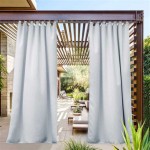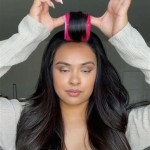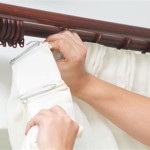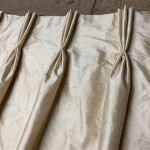Walk-In Shower Curtain Liner: A Comprehensive Guide
Walk-in showers offer a modern and accessible bathing experience, but maintaining dryness outside the shower area necessitates careful consideration of shower curtain liners. The primary function of a walk-in shower curtain liner is to contain water within the designated shower space, preventing leaks and potential water damage to the surrounding bathroom floor and walls. This article provides a detailed examination of walk-in shower curtain liners, exploring materials, sizes, key features, proper installation, and maintenance practices.
Understanding the Importance of a Quality Liner
The shower curtain liner is often an overlooked component of the bathing experience, but its effectiveness directly impacts the overall cleanliness and safety of the bathroom. A substandard liner can lead to water escaping the shower area, creating slippery surfaces that pose a slip and fall hazard. Furthermore, prolonged moisture exposure can foster mold and mildew growth on bathroom surfaces, leading to unsightly stains and potential health concerns. A well-chosen and properly installed liner mitigates these risks, ensuring a safer and more hygienic bathroom environment.
The effectiveness of a walk-in shower curtain liner hinges on several factors. The material must be waterproof and resistant to degradation from prolonged water exposure. The size must be adequate to provide complete coverage of the shower opening, preventing water from splashing or leaking through gaps. Additionally, the liner should be weighted or otherwise anchored to prevent it from billowing outwards during showering, further minimizing the risk of water escape.
Choosing the right liner also contributes to the overall aesthetic of the bathroom. While a functional liner is paramount, options are available in various colors and patterns to complement the existing décor. Clear liners offer a minimalist look, while frosted or patterned liners can provide added privacy and visual appeal.
Material Options for Walk-In Shower Curtain Liners
Several materials are commonly used in the manufacture of walk-in shower curtain liners, each offering distinct advantages and disadvantages. The most prevalent options include:
Polyvinyl Chloride (PVC): PVC liners are a cost-effective option known for their durability and waterproof properties. They are readily available and come in a wide range of colors and patterns. However, PVC liners are often criticized for their potential environmental impact and the release of volatile organic compounds (VOCs), which can contribute to indoor air pollution. Phthalate-free PVC options are available, mitigating some of these concerns.
Polyethylene Vinyl Acetate (PEVA): PEVA liners are considered a more environmentally friendly alternative to PVC. They are chlorine-free and generally do not release harmful VOCs. PEVA liners offer comparable waterproof protection and durability to PVC, though they may be slightly less resistant to wear and tear. PEVA is also generally more pliable than PVC, potentially offering better drape and sealing properties.
Ethylene-Vinyl Acetate (EVA): Similar to PEVA, EVA liners are also chlorine-free and considered a safer alternative to PVC. EVA offers excellent waterproof properties and good durability. It is known for its flexibility and resistance to cracking, making it a long-lasting option. EVA liners can be slightly more expensive than PVC or PEVA.
Fabric Liners (Polyester or Nylon): Fabric liners, typically made from polyester or nylon, offer a softer texture and more aesthetically pleasing appearance compared to plastic liners. However, fabric liners are not inherently waterproof and require a water-resistant coating to prevent water from seeping through. These coatings can wear down over time, requiring periodic re-application or replacement of the liner. Fabric liners are generally more expensive than plastic options and require more frequent washing to prevent mold and mildew growth.
Microfiber Liners: Microfiber liners are a relatively new option that combines the benefits of both plastic and fabric liners. They are highly absorbent and quick-drying, effectively preventing water from escaping the shower area. Microfiber liners are also resistant to mold and mildew growth, making them a hygienic choice. While typically more expensive than traditional plastic liners, their superior performance and durability can justify the investment.
The selection of the appropriate material depends largely on the priorities of the user, including budget, environmental concerns, and desired aesthetic. Rigorous research and comparison of the properties of each material are crucial to making an informed decision.
Key Features to Consider When Selecting a Walk-In Shower Curtain Liner
Beyond the material, several key features contribute to the overall effectiveness and usability of a walk-in shower curtain liner. These features should be carefully considered during the selection process:
Size and Dimensions: The liner must be appropriately sized to cover the entire shower opening, preventing water from splashing out. Measure the height and width of the shower opening carefully to determine the required dimensions. It is generally advisable to choose a liner that is slightly wider than the opening to ensure adequate coverage. For walk-in showers without a traditional door threshold, the liner length is particularly critical to preventing water from escaping underneath.
Weight and Weighted Hems: A weighted hem or the inclusion of magnets along the bottom edge of the liner helps to keep it in place during showering, preventing it from billowing outwards and allowing water to escape. Weighted hems are typically made of small weights sewn into the bottom seam of the liner. Magnets adhere to the shower wall or tub, further securing the liner. The weight should be sufficient to resist the force of the water and air currents within the shower enclosure.
Reinforced Grommets: The grommets at the top of the liner, through which the shower curtain hooks are inserted, are a point of potential weakness. Reinforced grommets, typically made of metal, provide added durability and prevent the liner from tearing or ripping over time. Plastic grommets are less durable and may be prone to cracking or breaking under stress.
Water Resistance and Waterproofing: The primary function of a shower curtain liner is to prevent water from passing through. Liners should be made of a inherently waterproof material or treated with a durable water repellent (DWR) finish. DWR finishes can wear off over time and may require re-application. Ensure that the liner is explicitly labeled as waterproof or water-resistant.
Mold and Mildew Resistance: The humid environment of a shower enclosure is conducive to mold and mildew growth. Liners treated with antimicrobial agents inhibit the growth of these microorganisms, preventing unsightly stains and unpleasant odors. Regular cleaning and ventilation of the shower area are also essential for preventing mold and mildew.
Easy Cleaning and Maintenance: Shower curtain liners are prone to soap scum and mineral buildup. Choose a liner that is easy to clean with mild soap and water. Some liners are machine washable, which simplifies the cleaning process. Regular cleaning prevents the buildup of grime and extends the lifespan of the liner.
Transparency and Light Transmission: The level of transparency of the liner affects the amount of light that enters the shower enclosure. Clear liners allow maximum light transmission, while frosted or opaque liners provide greater privacy. Consider the lighting conditions in the bathroom when choosing the level of transparency.
Installation and Maintenance of Walk-In Shower Curtain Liners
Proper installation and regular maintenance are crucial for maximizing the lifespan and effectiveness of a walk-in shower curtain liner. The installation process is relatively straightforward, but attention to detail is essential to ensuring a secure and watertight seal.
Installation Steps:
- Measure and Verify: Before installation, double-check the dimensions of the liner and the shower opening to ensure a proper fit.
- Install Shower Curtain Rod: Ensure the shower curtain rod is securely mounted at the appropriate height and position. It should be positioned to allow the liner to hang freely without touching the floor but also provide adequate coverage of the shower opening.
- Attach Shower Curtain Hooks: Install shower curtain hooks onto the grommets of the liner. Ensure that the hooks are properly aligned and securely fastened.
- Hang Liner: Hang the liner from the shower curtain rod, ensuring that it drapes evenly and covers the entire shower opening.
- Adjust and Secure: Adjust the position of the liner to ensure that it provides adequate coverage and prevents water from splashing or leaking through gaps. If the liner has weighted hems or magnets, ensure they are properly positioned to secure the liner at the bottom.
Maintenance Practices:
Regular Cleaning: Clean the liner regularly with mild soap and water to remove soap scum, mineral buildup, and other debris. A soft sponge or cloth can be used to scrub the liner clean. Rinse thoroughly with clean water and allow the liner to air dry completely.
Mold and Mildew Prevention: To prevent mold and mildew growth, ensure adequate ventilation in the bathroom after showering. Open a window or turn on the exhaust fan to reduce humidity levels. Periodically spray the liner with a mold and mildew cleaner.
Machine Washing (If Applicable): If the liner is machine washable, follow the manufacturer's instructions for washing and drying. Use a gentle cycle and mild detergent. Avoid using bleach, as it can damage the liner material. Hang the liner to dry or tumble dry on low heat.
Replacement: Over time, shower curtain liners can become worn, damaged, or stained. Replace the liner when it shows signs of significant wear, such as tears, holes, or persistent mold or mildew growth.
By following these installation and maintenance guidelines, users can ensure that their walk-in shower curtain liner provides effective water protection and contributes to a clean, safe, and hygienic bathroom environment.

Heavy Weighted Shower Curtains Orca Healthcare

Shower Splash Guards Bathtub Or Walk In Curtain Guard Slipx Solutions

Shower Splash Guards Bathtub Or Walk In Curtain Guard Slipx Solutions

Shower Curtain Liner Teal 3d Bubble Plastic With Magnets Weighted Waterproof Heavy Duty Eva 10 Gauge 72 X 12 Hooks Pvc Free Wal Com

Yisure Short Shower Curtain Liner 48 Inch Length Clear Peva Vinyl Waterproof Walk In Tub Sets With 3 Heavy Magnets 70x48 Yahoo Ping

Heavy Weighted Shower Curtains Orca Healthcare

Walk In Shower Using A Curtain Decor Design Designs

At What Height Should A Shower Curtain Be Installed Gerwerken Crafts

Before After Photos Of Our Bathroom Makeover How Much It Cost Young House Love

Zenna Home 72 In X Premium Clear Super Heavyweight 10 Gauge Shower Curtain Liner 71130yclr The








